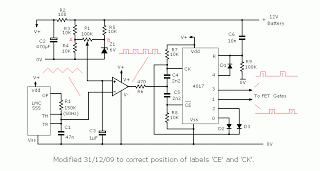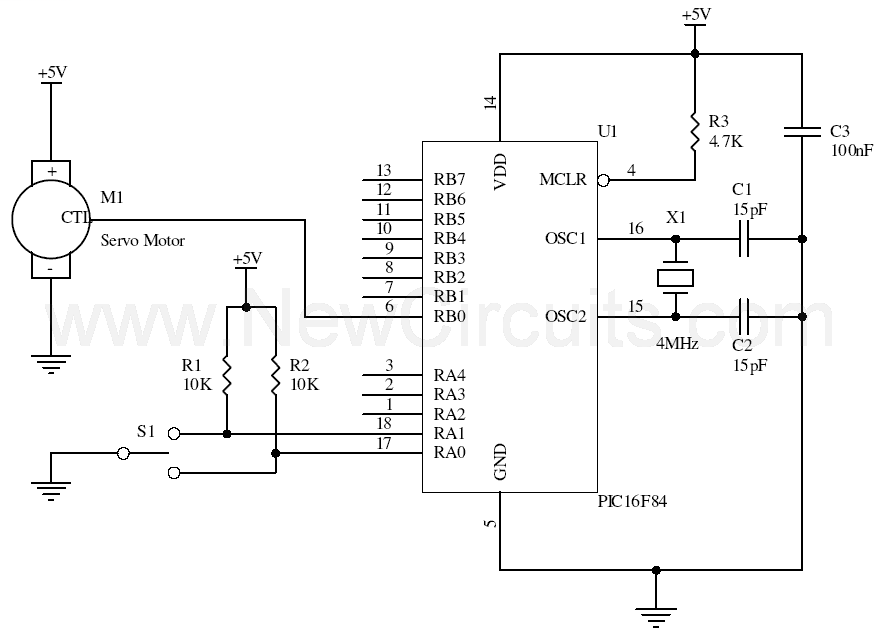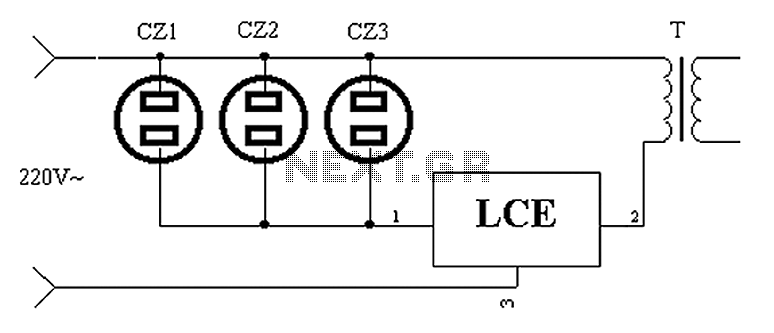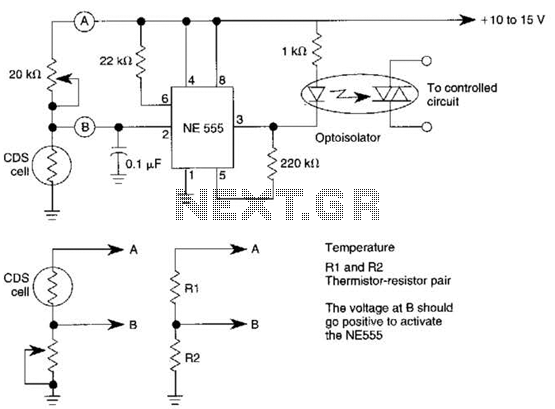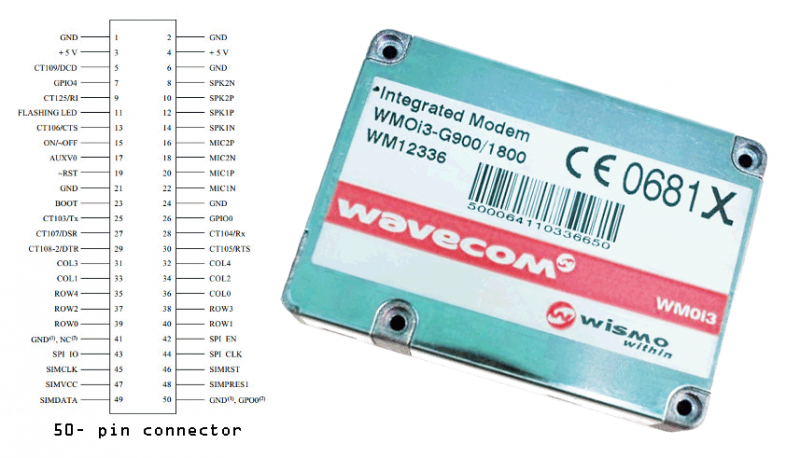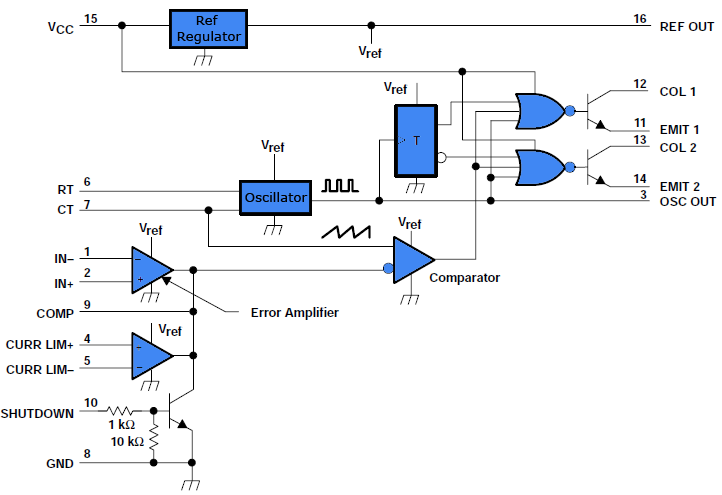
Remote control robot circuit
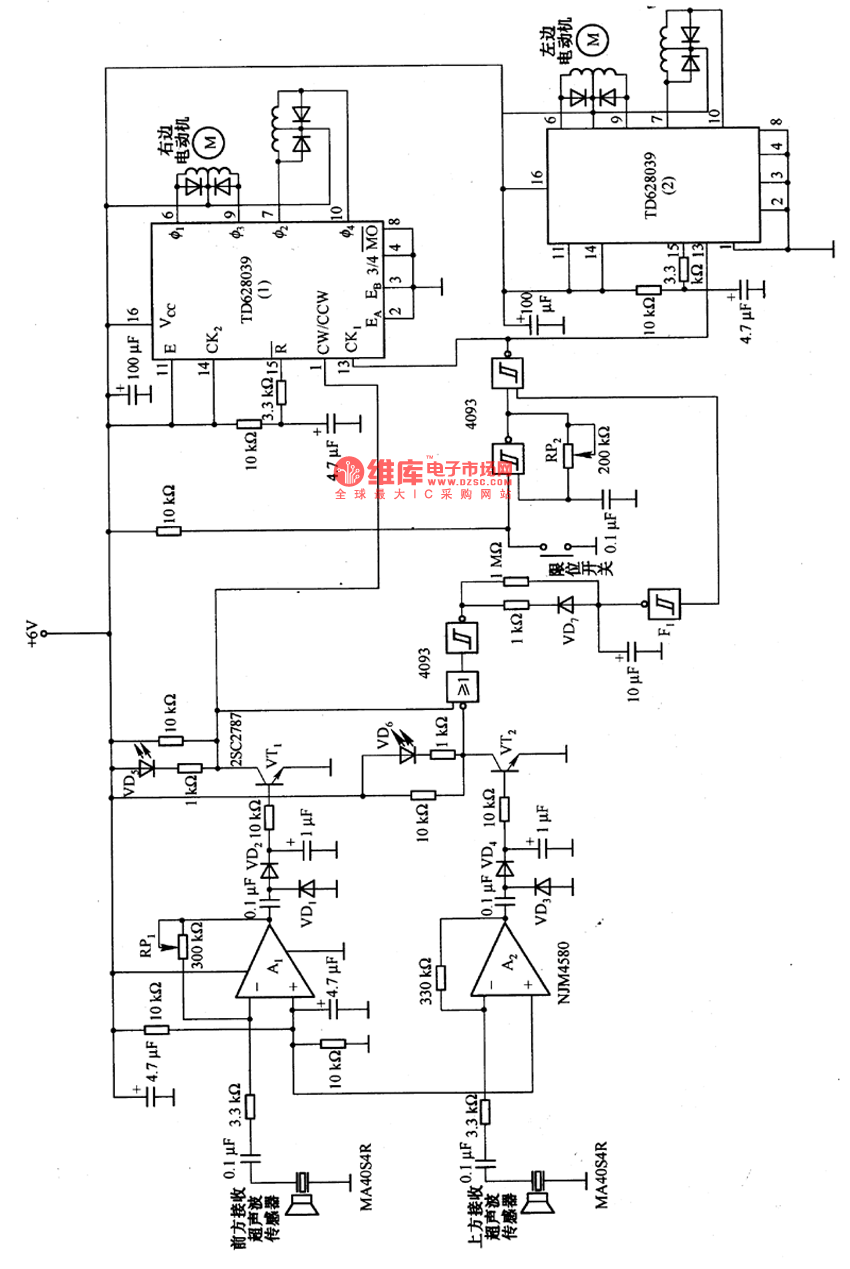
The remote control robot circuit is illustrated in the accompanying figure. Figure 2-36(a) presents the circuit diagram, while figure 2-36(b) depicts the operating timing diagram. The robot's rotation process involves an ultrasonic launching circuit, which consists of a 40 kHz oscillating circuit and a driving circuit. Two sensors are employed to receive the ultrasonic wave.
The remote control robot circuit operates based on ultrasonic wave detection and response. The primary components include an ultrasonic transmitter and two receivers positioned strategically to detect the reflected ultrasonic waves. The circuit diagram in Figure 2-36(a) outlines the configuration of the oscillating circuit, which generates a 40 kHz signal, and the driving circuit that powers the ultrasonic transmitter.
The ultrasonic transmitter emits sound waves that travel through the air and reflect off nearby objects. The two sensors, typically arranged at specific angles, detect these reflected waves. The time taken for the waves to return to the sensors is measured to determine the distance to the nearest obstacle. This information is crucial for the robot's navigation and obstacle avoidance capabilities.
The operating timing diagram in Figure 2-36(b) illustrates the sequence of events during the robot's operation. It shows the timing for the transmission of ultrasonic pulses and the subsequent reception of echoes by the sensors. The timing is critical to ensure accurate distance measurement and effective control of the robot's movements.
In summary, the remote control robot circuit leverages ultrasonic technology for navigation, utilizing a combination of oscillating and driving circuits along with strategically placed sensors to facilitate obstacle detection and response. This design allows for efficient operation and maneuverability in various environments.The remote control robot circuit is as shown in the figure. The figure 2-36(a) is the circuit diagram, the figure 2-36(b) is the operating timing diagram. The rotation process of the rebot is: in the circuit, the ultrasonic launching circuit is composed of the 40kHz oscillating circuit and driving circuit. The two sensors receive the ultrasonic wave: one rec.. 🔗 External reference
The remote control robot circuit operates based on ultrasonic wave detection and response. The primary components include an ultrasonic transmitter and two receivers positioned strategically to detect the reflected ultrasonic waves. The circuit diagram in Figure 2-36(a) outlines the configuration of the oscillating circuit, which generates a 40 kHz signal, and the driving circuit that powers the ultrasonic transmitter.
The ultrasonic transmitter emits sound waves that travel through the air and reflect off nearby objects. The two sensors, typically arranged at specific angles, detect these reflected waves. The time taken for the waves to return to the sensors is measured to determine the distance to the nearest obstacle. This information is crucial for the robot's navigation and obstacle avoidance capabilities.
The operating timing diagram in Figure 2-36(b) illustrates the sequence of events during the robot's operation. It shows the timing for the transmission of ultrasonic pulses and the subsequent reception of echoes by the sensors. The timing is critical to ensure accurate distance measurement and effective control of the robot's movements.
In summary, the remote control robot circuit leverages ultrasonic technology for navigation, utilizing a combination of oscillating and driving circuits along with strategically placed sensors to facilitate obstacle detection and response. This design allows for efficient operation and maneuverability in various environments.The remote control robot circuit is as shown in the figure. The figure 2-36(a) is the circuit diagram, the figure 2-36(b) is the operating timing diagram. The rotation process of the rebot is: in the circuit, the ultrasonic launching circuit is composed of the 40kHz oscillating circuit and driving circuit. The two sensors receive the ultrasonic wave: one rec.. 🔗 External reference
